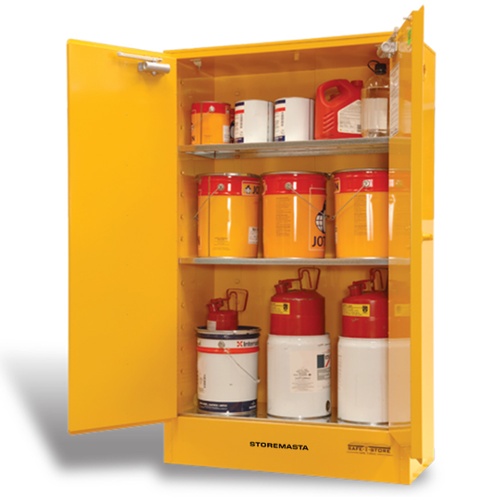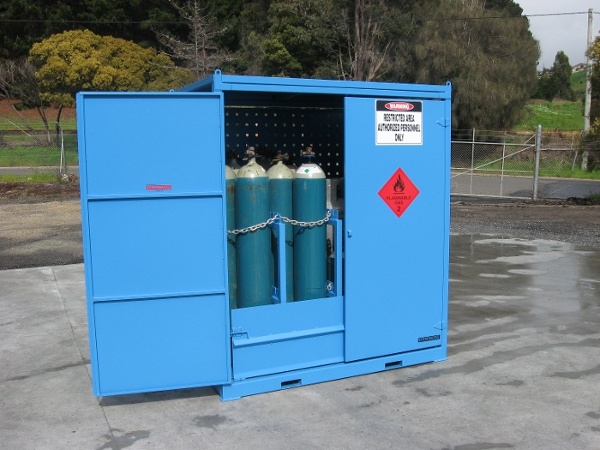When it comes to the Australian Standards of the storage and handling of dangerous goods, our workplace relies on these detailed standards to ensure safety and compliance with the manufacture of our chemical storage solutions. But, if you’re new to dangerous goods or chemical storage, you may not know where to go to find the requirements that specifically relate to the substances you have at your site. So, in this post, we’ll be breaking down the essential Australian Standards that you can access to give you the guidance you need in your chemical handling and storage operations.
IMPORTANT: While Standard Australia develops and revises standards, they are not responsible for enforcing, regulating or certifying compliance with those standards. Your local regulator will be able to provide you with more online information about the laws and regulations that apply to your state or territory.
Firstly, What are the Australian Standards?
The Australian Standards are issued by Standards Australia – the country’s leading independent, non-governmental, not-for-profit standards organisation. Standards offer a comprehensive range of information across a range of topics, with standards also created specifically for certain industries.
“…with stronger standards in place, Australia can enjoy greater economic efficiency and increased prominence on the international stage. Robust standards also help support our local communities by building a safer, more sustainable environment.”
When a new standard is developed, a technical committee is formed, bringing together key parties and stakeholders in a collaborative effort. This ensures the most accurate and comprehensive information to support workplaces in dangerous goods management.
Are Australian Standards for Chemical Storage?
The Australian Standards cover a broad range of issues for all types of workplaces, including those that manage dangerous goods and hazardous chemicals.
Indoor safety cabinets and other types of chemical storage have specific requirements for each dangerous goods class.
Within these Standards, there is detailed advice on the ‘storage and handling’ of specific chemical classes. In addition to this, there are further Standards that may also apply to your onsite substances, including gases, mixed classes, laboratory chemicals and other specific topics.
REMEMBER: The Australian Standards do get updated periodically, so make sure you have the latest copy of the Standard to ensure compliance in your workplace. You can find the year that the Standard was released within the title ie 1940:2017, which you can check against the Standards Australia website to ensure it’s still the current document or amendment.
What Topics are Discussed in the Aus Standards?
Under the broad umbrella of chemical handling and storage, the standards offer specific information on topics including:
- Minor storage – quantities, precautions etc.
- General requirements – general design and construction, lighting, restricted usage, transit storage etc.
- Package storage and handling areas – location, separation distances, construction, ventilation etc.
- Operational and personnel safety – precautions, operating procedures, leaks and spills, placarding, liquid transfer, construction and maintance work etc.
- Emergency management – manifest, planning for emergencies, placarding etc.
- Fire protection – fire extinguishers, fire protection equipment, fixed fire protection and detection systems etc.
- Waste storage and disposal – storage of wastes, waste management, disposal, pre-disposal treatment of empty containers etc.
Which Standards Apply to the Storage of Chemicals
In the next section, we’re going to clearly lay out the Australian Standards that pertain to the storage of dangerous goods, as per their DG class. However, keep in mind that most workplaces use more than one class of dangerous goods in their operations (such as flammable liquids, corrosive substances and Class 2 gases), so it’s important to properly identify all of the substances you have onsite, then obtain the relevant Australian Standards to assist with the development of your chemical handling and storage procedures.
Standards for Each Class
For quick reference, the various Australian Standards for chemical storage are listed below. They are listed in order of the relevant dangerous goods class that they represent.
The class or division of your dangerous goods will determine the design and construction requirements of your storage.
A list of Australian Standards for chemical storage includes:
Class 1 - Explosives
- AS 21871.1 Explosives – Storage, transport and use, Part 1: Storage
Class 2 - Gases
- AS 4332 – The storage and handling of gases in cylinders (*additional standards relating to gases in the next section of this post)
Class 3 – Flammable and Combustible Liquids
- AS 1940 – The storage and handling of flammable and combustible liquids
Class 4 - Flammable Solids
- AS/NZS 5026 – The storage and handling of Class 4 dangerous goods
Class 5.1 - Oxidising Agents
- AS 4326 – The storage and handling of oxidising agents
Class 5.2 - Organic Peroxides
- AS 2714 – The storage and handling of organic peroxides
Class 6 - Toxic Substances
- AS/NZS 4452 – The storage and handling of toxic substances
Class 8 - Corrosive Substances
- AS 3780 – The storage and handling of corrosive substances
Class 9 - Miscellaneous Dangerous Goods
- AS/NZS 4681 – The storage and handling of Class 9 (miscellaneous) dangerous goods and articles
Additional Gas Resources
In addition to AS 4332 – The storage and handling of gases in cylinders, there are additional standards that apply to specific gas types, including:
- AS 2927 – The storage and handling of liquefied chlorine gas
- AS 3961 – The storage and handling of liquefied natural gas
- AS/NZS 1596 – The storage and handling of LP Gas
- AS 1894 – The storage and handling of non-flammable cryogenic and refrigerated liquids
REMEMBER: When purchasing or construction dangerous goods storage equipment for your premises, ensure that you meet the design, construction, maintenance and use requirements of the Australian Standards. This will provide the highest level of protection against chemical hazards and potential issues with non-compliance. When in doubt, talk to a Dangerous Goods Consultant who can assist with DG management at your site.
Mixed Classes Storage Requirement
As most workplaces deal with multiple classes of dangerous goods in their daily operations, the Mixed Classes Australian Standard is also crucial for properly understanding the extra hazards posed by mixed class storage.
This Standard is the go-to resource for information on dangerous goods segregation of incompatible classes.
- AS 3833 – The storage and handling of mixed classes of dangerous goods.
Importance of Adhering to Standards
Making sure your operations run smoothly and safely is the goal of every business. But when you’re carrying dangerous goods, it’s vital that the correct resources are utilised to you can tick those compliance boxes.
By following the requirements of the standards for chemical storage, you’re equipping your workplace with the most up-to-date and relevant information, that’s been developed by Standards Australia and their technical committee.
It’s also important to conduct your own risk assessments onsite, to ensure that every hazard is being controlled and that compliance is continually sustained.
Safer Workplaces with Standards
If you’d like to learn more about improving dangerous goods safety for your operations, we have a free eBook that can help. This guide is dedicated to one of the most popular classes of dangerous goods – Class 3 Flammable Liquids – and follows the guidance of the Australian Standards to provide you with accurate information about the safe storage of these substances. Grab your copy of Essential Considerations When Storing Flammable Liquids Indoors now to learn more about controlling risks through detailed risk management — and compliant flammable liquid storage.

Living life by the 4 C’s of marketing – communication, coffee, compliance… and more coffee – Leisa Andersen is Storemasta’s Content Marketing Manager. When she’s not writing, you’ll find her enjoying all the good things in life, including shopping, travel and gluten free donuts.


